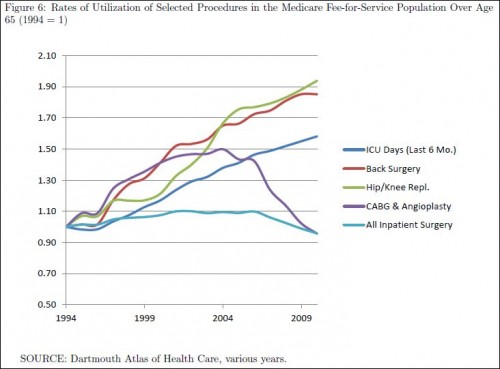One of these things is not like the others:
That’s a figure from Amitabh Chandra, Jonathan Holmes, and Jonathan Skinner (PDF). The authors explain:
In the case of cardiac stenting and bypass surgery, there was a dramatic run-up in their use during the 1990s for heart attacks and other heart disease, and with a particularly rapid rise in the use of stents (wire cylindrical devices used to maintain blood flow in the heart’s arteries). During the mid-2000s, however, several randomized trials suggested very modest benefits arising from the use of stents for the most common types of heart disease, leading to a downturn in the use of these procedures.
According to this story, it’s all an angioplasty effect. Hold the CABG. However, no doubt the rise of statins also played a large role, probably affecting both CABG and angioplasty.
UPDATE: NodakEM on Twitter points out that smoking cessation also likely played a role in reducing incidence of heart disease.
UPDATE 2: By email, Amitabh Chandra points to this paper.



